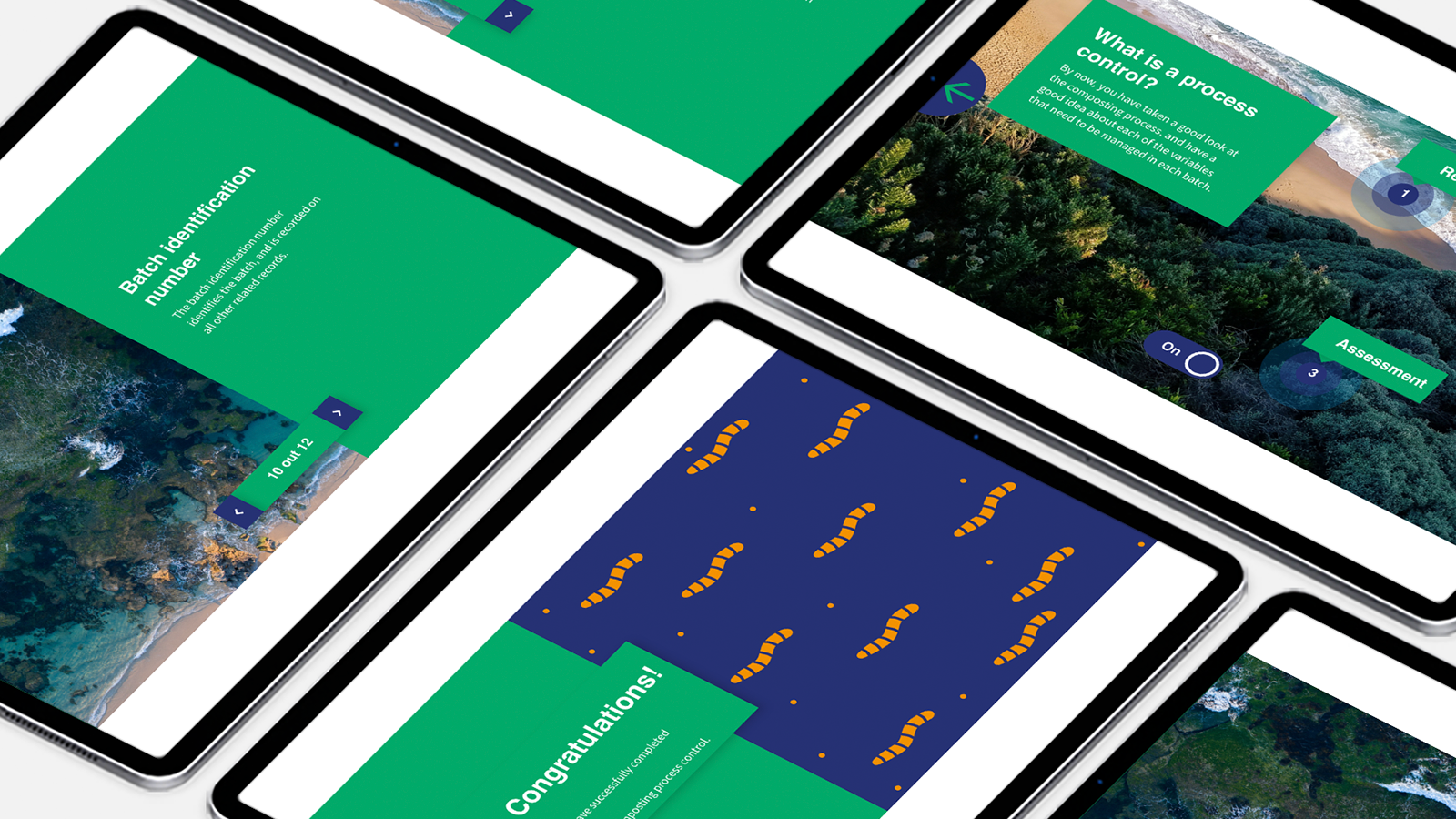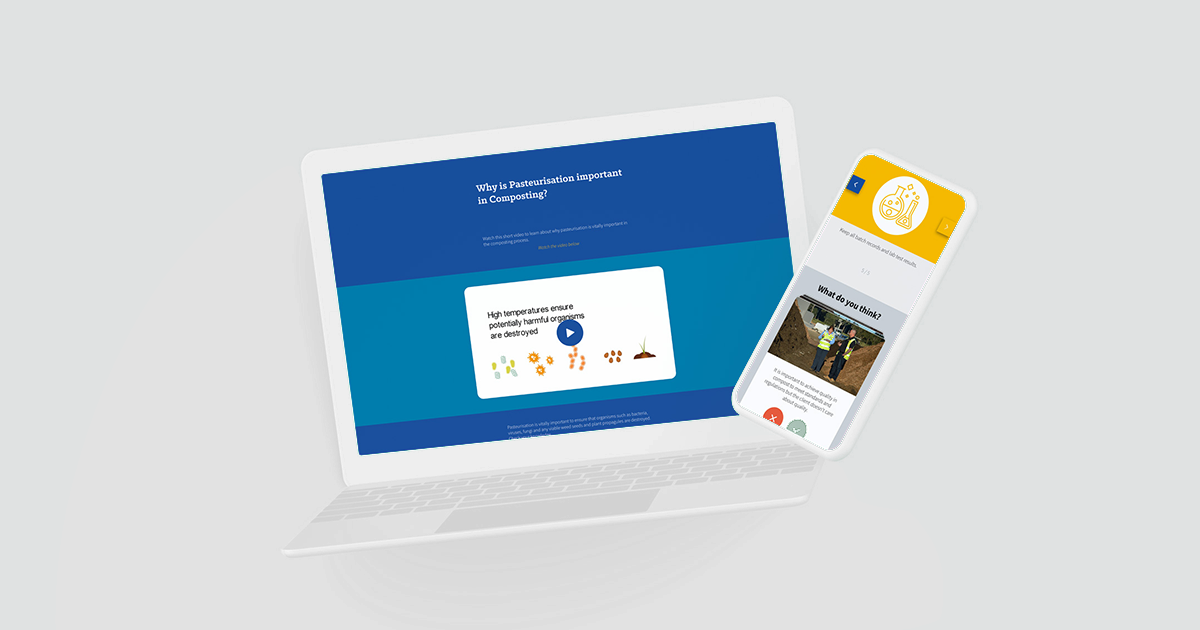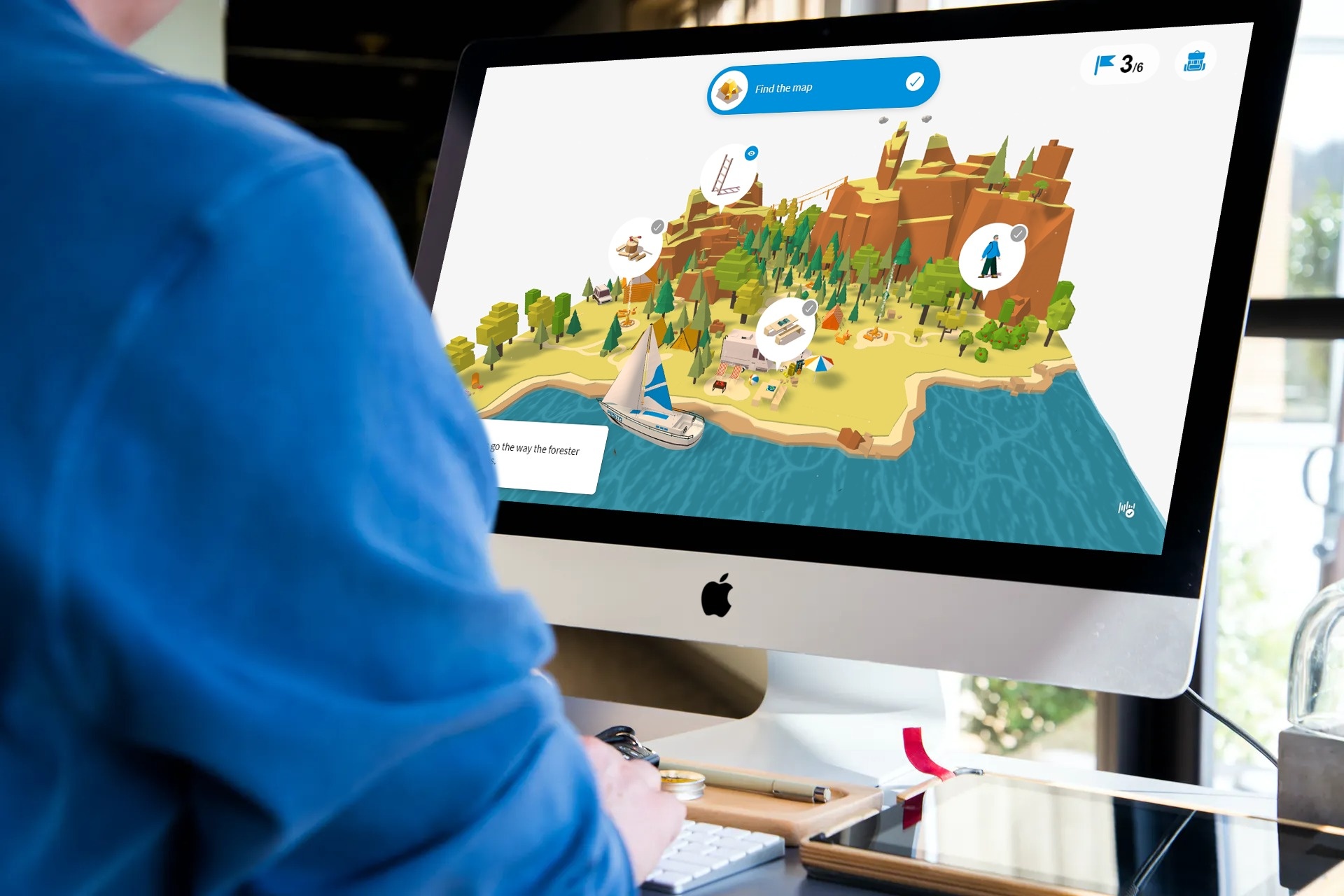
Learning with chatbots
Chatbots have advanced so far that it can sometimes be harder to distinguish between robots and humans. Learn more about how chatbots can be incorporated into corporate training to develop engaged employees.
Chatbots are being increasingly deployed as an important channel of contact. As a tech tool, along with phone and email, plus real human agents, they are becoming a vital point of contact for customers getting in touch with a company.
In addition, it has been used in e-learning content to create an interactive learning experience by using informal languages and creative GIFs. Effective conversational learning with real-time response is one of the advantages of chatbot learning.

Connecting with the consumers using a chatbot
LivePerson’s Consumer Preferences for Conversational Commerce survey found two-thirds of consumers would like to message with brands. Again, this reflects a preference for consumers to do business with companies that answer questions immediately.
Australian consumers are among the highest levels of chatbot users worldwide. Consumers particularly in younger age brackets, are interested in the convenience and ease that chatbot interaction can offer, but they can still be sceptical of bots and prefer human interaction.
However, when developed effectively, chatbots are extremely valuable and can offer a very unique way to forge a connection and develop valuable insights

Chatbots can become a robot teacher
Chatbot learning has evolved because we are now in an age where education has become more accessible than ever. We are constantly in pursuit of better, faster, and deeper ways to learn.
Adult learners are busy and rarely a priority to make time to learn, but utilising chatbot can change this tendency with spikes in productivity because of personable and knowledgeable training assistance.
Additionally, it can offer a welcome change to employees, with interactive training elements to engage them with high knowledge retention and put them in control of their own learning journeys.
What are the benefits of chatbot learning for organisations?
Some of the advantages of incorporating chatbot learning include:
- Real-time analytics dashboards, these measure the most commonly asked questions, track active and engaged learners versus learners who are not engaged, view the interactions that happen during off-hours, and evaluate learners’ skill development.
- They will encourage employees to be more productive and better placed to learn at their own pace when they need support.
- They can push out personalised information to learners.
- They can review and access all learner created questions and responses.
- They reduce the workload of trainers.
How can chatbots be used in corporate e-learning?
Integrating chatbot learning into your Learning Management System (LMS) environment can provide your organisation with additional data about learners.
This will significantly contribute to the process of learning because learners are using an interactive mechanism as compared to traditional e-learning systems. Digital learning with chatbot offers more personalised and effective learning, by giving learners direct access and control to information and learning stored in the LMS.
Let’s Chat Compost
An example of a conversational learning chatbot approach developed by imc Australia was deployed in the New South Wales Environment Protection Authority (EPA). The chatbot complemented the Compost Facility Management Training by teaching learners some of the basics of the main concepts in the e-learning program, such as Odour, Pasteurisation, Contamination and the Composting Process. It was also operating as a driver to motivate participants to want to learn more by going on to complete the Compost Facility Management course.
imc Australia used engaging design (Chatbot framework) and a conversational learning approach to teach participants about technical concepts involved in composting, using an informal and fun approach to gain their interest and inspire them to complete further study on the subject. You can register on the EPA’s learning management system here.

Chatbot learning utilises interactive elements
Moreover, imc created a chatbot that uses more informal language and uses GIFs as well as emojis to make it a more interactive experience for learners.
We have implemented GIFs within our chatbot learning because they can make learning more vivid and entertaining.
Here are some of the benefits of using GIFs in e-learning:
- They visually represent ideas and information in a few seconds
- They are easier to follow than a series of still images
- They usually run in a loop and are also perceived out of the corner of the eye
- They are much easier to create than higher-end video content
- They can play automatically on almost any system
- They trigger emotions. The stronger the emotion, the better the memory
What do chatbots mean for your e-learning
Chatbot learning can make a more productive learning process. It offers a more personalised experience for employees and also makes learning and development departments more efficient.
So, if you want to provide on-the-ball support and real-time personalisation for your learners, make your initiatives more productive and efficient, then a chatbot might be right for your organisation.

Gamified Learning to Drive Learner Motivation
How does gamified learning increase employees' motivation and help them build their skills in the workplace?

Villeroy & Boch Chatbot Learning
A successful chatbot learning combined with web-based training to urgently train 400 sales representatives worldwide.
Contact


Train your external network with a robust LMS and curated e-learning content
Never underestimate the power of your external partner network for your business success – and training them plays a pivotal part in enabling them to thrive

Enabling the success of your external partner network is a crucial ingredient for your business success - it’s your job to support them in every way you can. Therefore, training plays a pivotal role in this. If your organisation trains its network of partners, you empower the people outside of your organisation to contribute to your business goals. Ultimately, it results in more trained resources, more efficient collaborative processes, and turns your partners into advocates who can become your most ardent supporters and sources of new business.
The LMS market in Australia
The Australian LMS market is a market that had significant potential, and was being underserved. This is because the cost of LMS deployment can be unnecessarily high and open-sourced solutions do not suit many corporate LMS needs.
When selecting an LMS in Australia, or anywhere, there are key requirements that must be met:
It is therefore important to implement a cloud-based LMS for external networks that is quick to set up. Moreover, it should also be user friendly and backed up by Australian support.
Your external networks may be wider than you think
You may ask: who are my external networks?
Here are a few examples of who you can empower to help grow your organisation through comprehensive e-learning training:
- Partners
- Customers
- Resellers and franchisees
- Dealerships
- Members and volunteers
- Friends and family
- The general public
How can e-learning enable these audiences to grow your business?
Utilising your external network can be valuable in helping your organisation to achieve its goals in a variety of ways:
- Investing in your external networks will improve their knowledge and skills. In return, they can use their improved skills to contribute better, quicker, cheaper, and more effective outcomes for your business.
- If they are up-to-date with your developments and plans for the future, your external networks will align more closely with your organisational goals.
- By training and certifying your external networks they will be more compliant and follow your processes and guidelines and meet your quality, security and safety standards.
- Empowering and supporting your external audiences by training them will improve their skills and sense of engagement with your organisation.
By taking on board and implementing e-learning for your extended networks, you will grow your organisation as an extended Australian enterprise! imc Australia collaborates with our partner, Go1, to develop a case study to understand the benefits of this concept.

Where wasted potential lurks for companies
Learn how to train your external partner network with a robust LMS and turn a learning curve into an earning curve.

Multi Tenancy LMS Solutions
A multi-tenancy LMS is a single learning management system instance that serves various learner groups with differing training needs.
Contact


I just want to play!
Why gamified learning increases employee motivation
How can organisations incorporate gamified learning to build the skills of their employees? In our digital world, organisations are more likely to invest in e-learning but are often challenged by low completion rates. Therefore, content needs to be taught in a playful way! We checked with some experts how this can work especially in Australia.

Our play instinct
When it comes to the concept of play, we usually think about the interactions of children. A child’s imagination is not the limit of play. This is demonstrated by the Latin term “homo ludens” which means “the people playing”. Our play instinct is very pronounced, regardless of how old we are. This is because games offer us a world of fun and creativity. We mostly play in a digital context in the modern world, and institutions and companies alike can take advantage of this through gamified learning.
A recent government study of Australian higher education students² found that only 46.6% of online students completed their qualifications. For face-to-face students, this is 76.6% by comparison. These statistics are problematic, because if learners fail to gain knowledge, then both time and money are wasted. It is vital that we present e-learning content in a playful way.

It’s time to get serious
Another sub-category of serious games is digital education games and gamified learning. Their primary focus is to impart knowledge. There are three types of serious games, these are:
Drill and practice games
The classic knowledge building games apps develop to build vocabulary or mathematic skills.
Quiz games
The BizQuiz app from imc is an example in which employees and entire teams can take part in engaging quizzes.
Point and click adventure games
Roleplaying games with enriched content and an exciting narrative.
The "City of Goods"

Learning through experience
The psychological benefit of gamified learning
Intrinsic
Extrinsic
Gamification is embedded in our everyday life. This can be through motivational tactics such as benchmarking (calorie or step counters) and nudging (such as point systems).
In summary, your employees are more likely to be motivated through gamified learning, when it is applied playfully.
Educational games can help reduce dropout rates and help employees build their skills in the workplace. Therefore: Game on!
This blog article is an extract from an article written by Sven R. Becker (A board member of imc AG) and Stephan Urbanski (Senior Instructional Designer at imc AG).
The original article was published in the I+MIO e-magazine (Available in German only).

Go for Game-based Learning
We talk about what lies beneath the trend of this playful knowledge transfer method. We explain why it works so well and present 3 application scenarios for game-based learning in the company.

Training soft skills with serious games
Softskills are more important than ever. But how to train them? imc's research team dealt with this challenge in the DEVELOP research project.
Contact


learning culture
When the Act of Learning Becomes a Habit
Organisations that can readily adapt and change are the one's that succeed. Those who look beyond using learning for compliance are reaping the benefits.
A featured article in The Australian Financial Review
Researcher Imed Bouchrika, writing on research portal Guide2Research, says training has become an integral part of workforce development, employee performance and organisational competitiveness, noting that “intellectual capital is valued just as much as physical and financial assets”.
“Training and development is most effective when implemented strategically, which involves content development, method of delivery and integration of technology,” Bouchrika writes.
To remain competitive, continuous learning has become imperative in creating and maintaining a sustainable advantage.

imc's featured article as printed in the Australian Financial Review
Nick Petch, head of learning experience design and strategy at imc Australia, says a “big shift” is needed in organisations’ approach to learning and development.
“For many organisations, the core skills and competencies that drive their organisations have shifted and changed almost overnight. Overcoming these challenges means radically changing the way learning and development occurs,” he says.

Reaching Business Growth by Learning & Development
Bringing all parts of digital learning together will increase revenue, improve efficiencies and organisational growth.

Redefining Your Organisation’s Learning and Development Strategy
The digital transformation of learning is having an immediate and notable impact on business performance. The dominant behaviours that will define success are adaptability, nimbleness and alignment.
Contact


Impactful Learning: The Driving Force Behind Business Performance
The digital transformation of learning is having an immediate and notable impact on business performance. Those who have adapted are reaping the rewards, says Daniel Antman, Managing Director of imc Australia. In his opinion, companies will need to redefine their organisation’s learning and development strategy in 2021. A personal statement.

Daniel Antman, imc
As we approach the end of what can only be described as a tumultuous 2020 and look forward to 2021, the dominant behaviours that will define success are adaptability, nimbleness and alignment.
Many businesses are going through their 2021 strategic planning right now. And, some who may have already completed their plans are going back to revisit them, to ensure they are relevant to the changed and the probable long-term structural changes we have seen.
There is also a sense the language of business is changing. A few months ago people in business were still saying “when things go back to normal we’ll do this and that”. Now the rhetoric is changing.
There is greater recognition - at least, empirical recognition - that we are probably going to be forever spinning on a new axis. Think back to the 2011 powerful earthquake that moved the main island of Japan by 8 feet and shifted the Earth on its axis. It’s where we are at in terms of the business landscape too – spinning in a different place and probably never going back.
Adaptability and Speed Are Key
We’ve seen many examples of businesses having to adapt to this new business as ‘unusual’ environment. In a learning context, we’ve seen companies pivoting from delivering in-house training sessions, offsite sales conventions and other forms of in-person professional development to a full digital delivery format. Those who have adapted quickly may well be best positioned to capitalise on the ongoing benefits of digital learning.
It’s one thing to adapt, it’s another thing to do it efficiently and effectively. Again, in a learning context, those businesses who have been fast and adept at embracing new delivery mediums are having more success in maintaining effective connections with staff and key stakeholders.
Aligning Learning Strategy to The Digital Generation
Aligning the delivery of quick, effective and meaningful knowledge-transfer with the commercial/performance imperatives of the business has never been more critical. For many astute business people, the current climate has highlighted the critical importance of knowledge transfer and learning to drive increased engagement with staff and other stakeholders including customers. Stable, well trained and stimulated employees translate directly to the bottom line. Well-developed and informed customers/stakeholders become advocates for businesses.
A recent LinkedIn research study identified the primary driver that connected Millennials and Gen Zs to the organisations they worked for was… development. Not pay or work conditions, but development.
For organisations who see themselves as genuine learning businesses, and who are committed to developing and growing their teams, their time has come. They are embracing the technologies that will enable them to deliver the learning that is valued by those seeking the development, support and care.
Happy, stimulated, developing and supported employees are those more likely to stay and contribute to the ongoing success - something every C-Suite and/or senior manager needs to keep in mind.
Virtual Conferencing Tools and Learning
Throughout the crisis of 2020 businesses have turned to and utilised connectivity tools including Zoom, GoToMeeting and Teams to mention a few. In many respects, these tools have been a communication lifeline for business.
Yet, on their own, they are not learning, training or development tools. Genuine learning that is impactful, sustainable and measurable needs to be expertly designed to ensure it delivers the desired outcomes through the chosen delivery platform.
Virtual conferencing tools can and often do play an important part in a blended learning environment. However, they are not designed to be alternatives to expertly designed and delivered learning platforms.
Would You Like Cake & Coffee With Your Training?
Are those days gone? No longer can businesses rely on the attraction of food and drink to encourage staff to join the in-house training sessions in the communal meeting rooms. Nor can they rely on trips to the local café which doubled up as the overflow meeting room when the office facilities were booked.
Yet the challenges that 2020 have thrown out open the opportunity for innovation and out-of-the-box thinking when it comes to learning. The sophistication and power of technology-driven learning platforms offer businesses with exciting possibilities to deliver knowledge in a way that can be a genuine game-changer.
Learning, training and knowledge-transfer are no longer the sole domain of the HR or Learning development teams. They should be a focal point for the C-Suite and boards when considering how to leverage digital learning platforms to develop, stimulate and ultimately retain the people they rely on to meet their business objectives.
Daniel Antman is the Managing Director of imc Australia, part of the global imc group and one of the world’s leading digital learning businesses.

Further information
If you would like to learn more about how to implement digital learning effectively, feel free to contact us.
Contact
